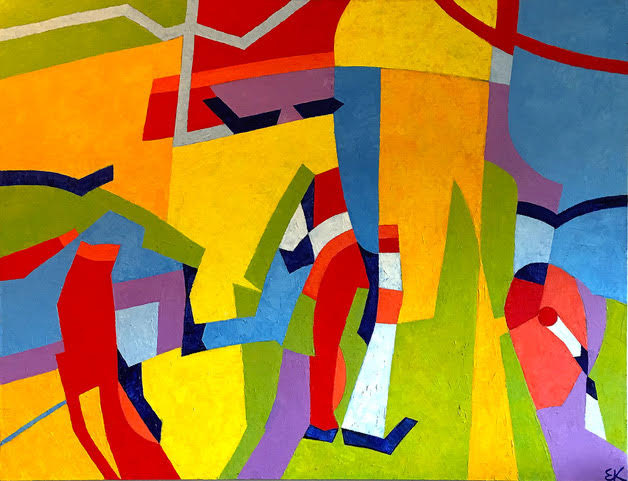
I first met Gregory Vinitsky in the summer of 1992 when a colleague from the Smithsonian Institution took me to his Georgetown gallery in Washington, DC. There was an exceptional range and quality of nonconformist Soviet art on display at the gallery. Around that time, the Communist Party-led Perestroika aimed at restructuring and reforming the Soviet sociopolitical system ended, the USSR was officially dissolved, and art from behind-the-iron-curtain became known in the West. Artists could freely travel and exhibit their works abroad for the first time in almost seven decades. Those who decided to emigrate – mostly non-conformists whose art had been forbidden in the Soviet Union – were settling in Paris and New York. Unfortunately, their expectations of quick success and fame were rarely realized. The very existence of the art market was something new and shocking to most of them. Unfamiliar with the demand for commercial viability, some survived due to occasional patrons and shows in obscure, small galleries. It was a welcome surprise that the newly opened Gregory Gallery was thriving.
Gregory Vinitsky is a civil engineer and architect by training. In the 1970s, he started collecting contemporary artworks in his native Vilnius, then the capital of the Lithuanian Soviet Socialist Republic, where some room for dissent existed. After moving to the United States, Vinitsky met Norton T. Dodge, a college professor and avid collector of Soviet unofficial art who made the rescuing of artworks, and sometimes their creators, his life’s mission. Later in the 1990s, Norton and Nancy Dodge donated more than 20,000 works by over 1,000 non-conformist artists to the Zimmerli Art Museum (Rutgers University, NJ) making it the largest museum collection in the world.
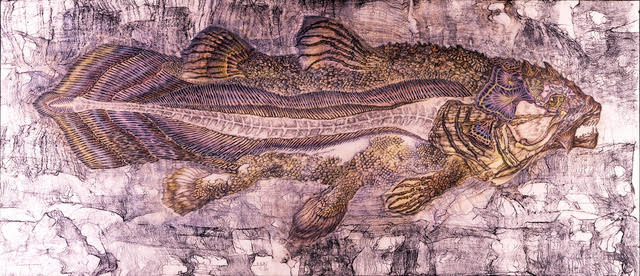
Vinitsky and Dodge had similar beliefs. Vinitsky took numerous trips to the former Eastern Bloc where he acquired artworks and gathered extensive documentation on unofficial art of 1956-1991. Trusted by artists, he is one of very few bilingual collectors who recorded interviews with former dissidents in their homes and studios. (Vinitsky plans to make these oral history archives available on the Internet.) After Dodge passed away in 2011, Vinitsky assisted the Zimmerli Museum staff with compiling and updating the museum database and catalogs – an endeavor which took over a year.
Vinitsky has supported the émigré artists by organizing solo and group shows in Europe and the United States and publicizing art of the diaspora through catalogues, monographs, and educational videos.
After meeting his soulmate, enigmatic and versatile artist Elena Keller, Vinitsky opened a gallery in New York City in 1994. (Ms. Keller’s works can be found in The 9/11 Museum and other museum and private collections throughout the US.) His gallery was located at Fuller Building, an art hub inside an Art Deco skyscraper on the northeast corner of Madison Avenue and East 57th Street. At Gregory Gallery, visitors found non-conformist works from the second half of the twentieth century exhibited alongside art of the early Soviet avant-garde displayed in neighboring galleries.

Vinitsky also began to represent the second wave of American and German abstract expressionism (Jean Davidson, Gunther Gumpert, Kimber Smith). When asked by a TV reporter about the expanded offerings, Vinitsky responded, “I like collecting and showing good art.” Exhibition openings also served as opportunities for artists and future collectors to develop lifelong friendships.
Since the COVID-19 era began, many art galleries have closed their doors and moved their business online. Three years ago, Vinitsky relocated to South Florida with genuine enthusiasm.
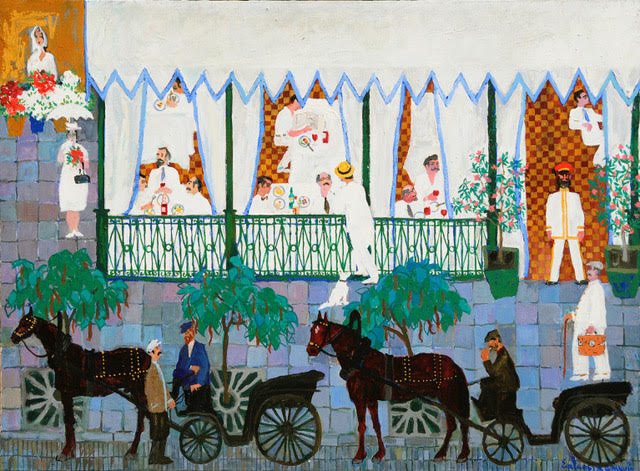
As a resident of Coral Springs, Vinitsky has easy access to the world’s premier art shows. Ms. Keller and he find the international art scene in Miami stimulating and conducive to their creative projects. The current gruesome events in Eastern Europe have moved Vinitsky to share his knowledge of artistic heritage with new audiences. G&S

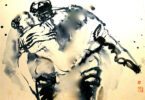
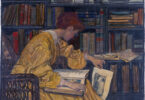
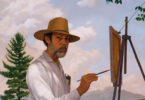
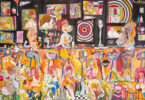
We have a couple of paintings of Mihail Aleksandrov. Would like to know if you have any interest? Phil Swisher, Sarasota, FL
Hello Phil,
Please contact the gallery directly if you have any questions related to the artists mentioned in the article.
Warmly,
The Editor.